| It had been suggested that we visit the Huntington Museum and
Gardens at San Marino, which is in the greater Los Angeles conurbation. It was built in 1910 by Henry Huntington, a wealthy
businessman who made his money in railroads and utilities. He was also a
collector and amassed one of the finest art and book collections in the
world. The museum now hosts over half a million visitors each year. | 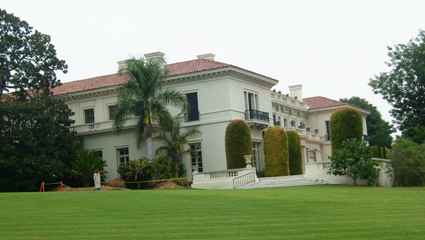 |
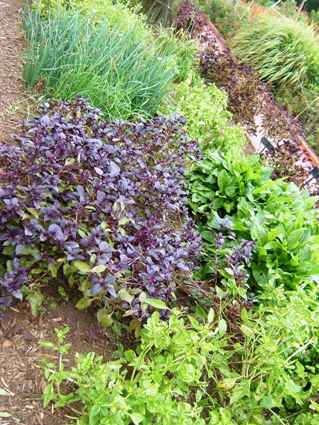 | The house was not open
to the public since it is about to have a new roof put on it, and the whole
structure needs to
be brought up to current earthquake standards. The estate he bought was 600
acres and he retired at 60 to devote more time to his collections and
landscaping the gardens. Part of the estate was later sold but the rest was
made over to an educational trust in 1919. There are seven separate
gardens, one of which is the herb garden, and this is where our
guide works as a volunteer. The plants were used historically for a variety
of purposes from curative to culinary to dyeing, and many still are. Our
guide was very informative, especially on the ones used in the 17th and 18th
centuries. |
| Another garden is the Rose Garden which would be
spectacular at its peak but at this time of the year was rather past its
best. That's not to say that there were not a few excellent late varieties
still in bloom. | 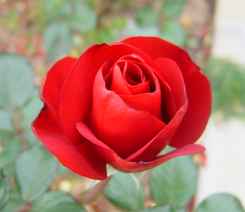 |
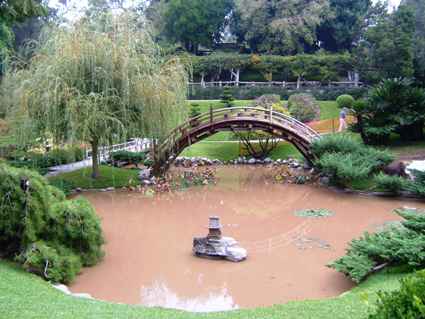 | The Japanese garden
is spectacular and is often used for film shoots. The waters were a little
murky, hiding the koi carp, but this was to be expected after the rains.
There is a school of thought which says that the muddy water helps with the
reflections which are part of the design. I'm not sure I agree with that
theory given the preference koi have for clear water. |
| A central focus is the Tea House, which is lovingly cared for by
one man. It certainly looked immaculate. | 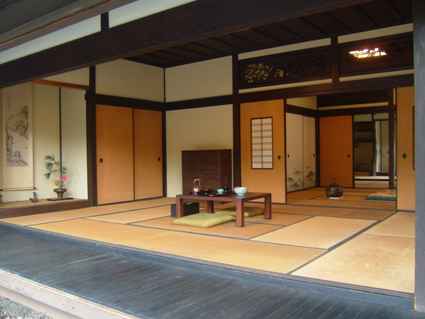 |
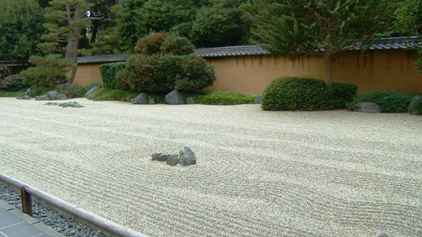 | Not so often seen is
the Japanese style rock garden where the gravel has been painstakingly raked
into a symbolic design. I have seen them before but never on this scale. |
| There was another part of the garden for the bonsai trees. These
were some of the best I've seen and it was clear that they were both
carefully tended and of venerable age. | 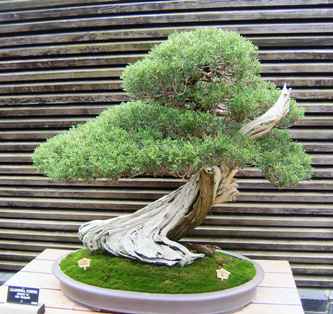 |
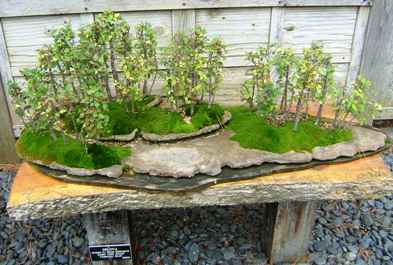 | I particularly like
the style which looks like a miniature stand of trees, a miniature version
of the real world. |
| Back to the other gardens, which merge gracefully into one
another. These striped lemons were alongside one of the linking paths as we
approached the Australian Garden. | 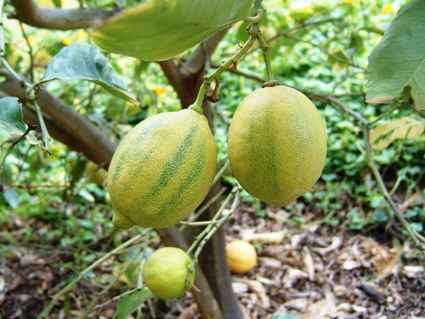 |
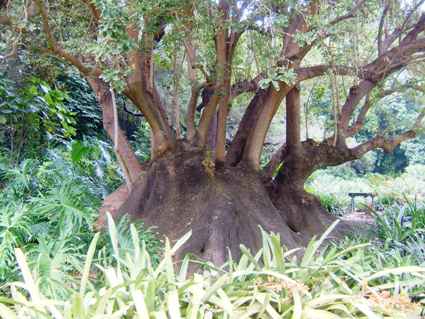 | Some trees are just
weird. This one where the roots merge into a lump is one I have seen before
but I'm not sure what it is. |
| As befits an area so close to the desert and with the oasis
microclimate, the Desert Gardens are one of the star features. The sheer
variety of plants growing in such profusion is the result of careful
planting and prodigious amounts of care. | 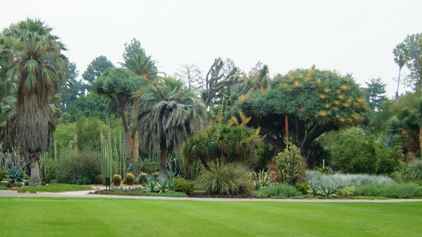 |
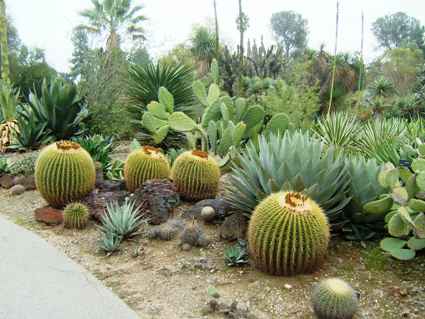 | There are many kinds
of cactus and succulents, here growing to sizes which we had never seen
before and which are probably not possible anywhere else. |
| There were several ponds most of which had fish present. But the
koi are the most colourful and the most tame. Although I do wish that
people would not feed them popcorn, which they can't eat, despite the notices. | 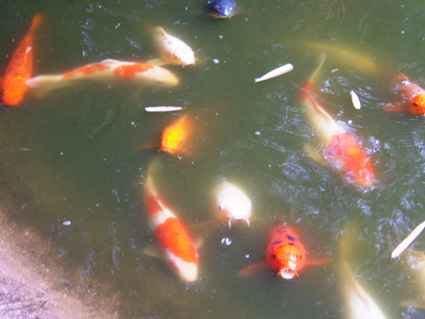 |
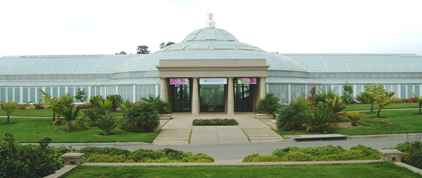 | A new addition
is the conservatory which has only recently been completed, and designed very much with
education in mind. |
| Inside is a state of the art misting system designed to replicate a subtropical
jungle atmosphere and thus provide an ideal environment for the palms,
bromeliads, orchids, air plants and many other varieties which have been
planted here. | 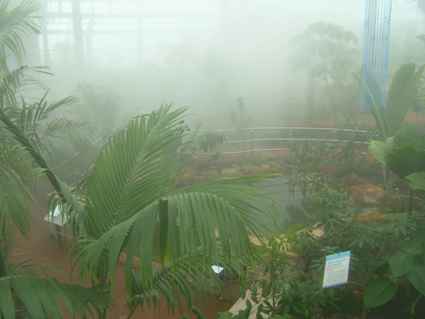 |
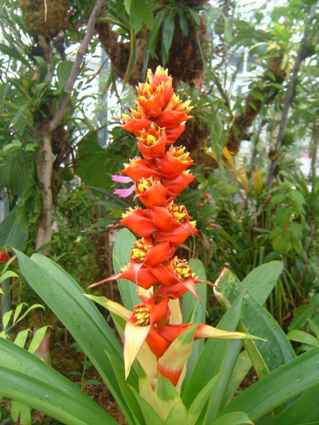 | These are some of the
most spectacular blooms in the plant kingdom. Some we had seen before but
others were completely new to us. |
| The vibrancy of some of the colours is really striking. I'm not
sure whether this counts as a leaf or a flower, or even what sort of plant it
is, other than striking! Unfortunately many of the trees and plants didn't
seem to have name tags. | 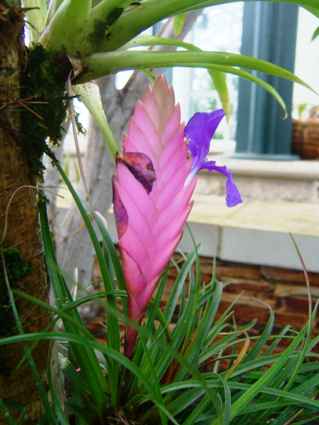 |
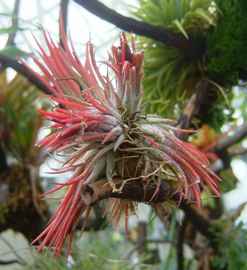 | There was one area
devoted to airplants which get all their nutrients from the air but which use other plants to provide a platform to which they cling. |
| Some blooms are so delicate, you wonder how they survive, and
think that you are lucky to have caught them in bloom, which must be for a
very short period.. | 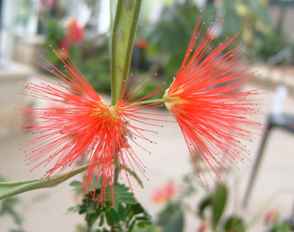 |
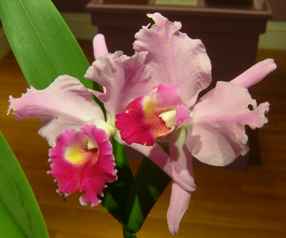 | Part of the
conservatory is given over to orchids, and one of the museum galleries was
given over to a temporary exhibition on art and the orchid. |
| The museum buildings house several collections of paintings
some of which are quite famous. We are not generally up on famous painters
but we certainly recognised some of the names such as Turner and
Gainsborough. The overall collection is one of the most comprehensive of
English and French 17th and 18th century art. | 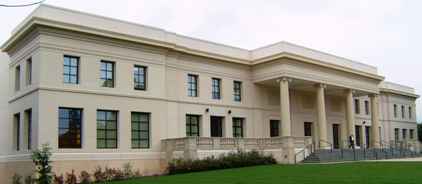 |
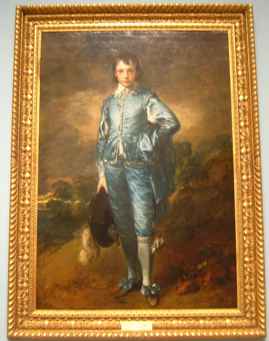 | This is Gainsborough's
'Blue Boy' which was painted in 1770 in the style of an earlier English
court painter, Anthony Van Dyck. It is ranked as a true masterpiece of
English art. |
| This is the other most famous painting in the collection,
'Pinkie' by Sir Thomas Lawrence, painted in 1794. It was painted in memory
of a young girl who had died and is classed as one of the classic idealized
portrayals of childhood. | 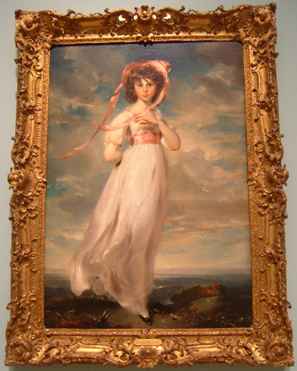 |
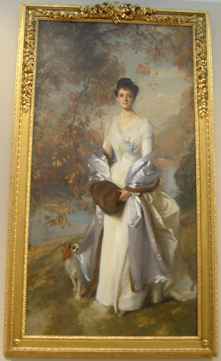 | This is a portrait of
Pauline Astor in 1898 by John Singer Sargent. Although still in her teens,
she had recently emigrated from New York to London and would take London by
storm. |
| There were other art forms around such as this beautiful statue
in the entrance, but the
place only opens from 1200hrs until 1600hrs and our day had run its course.
We could easily have spent several days here. We never even looked at the
library which has a Gutenberg Bible on display as well as early Shakespeare
and Chaucer. | 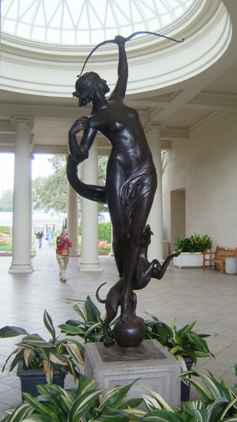 |
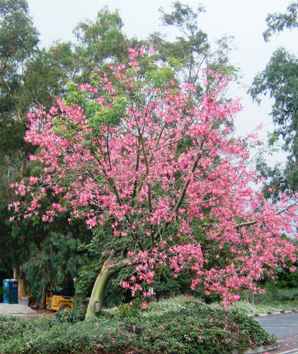 | But even the car park
has attractive blooms. This is a Japanese tree so one of the gardeners told
us. We took over 200 photos of the gardens so you have only seen a fraction,
as we did. |
|